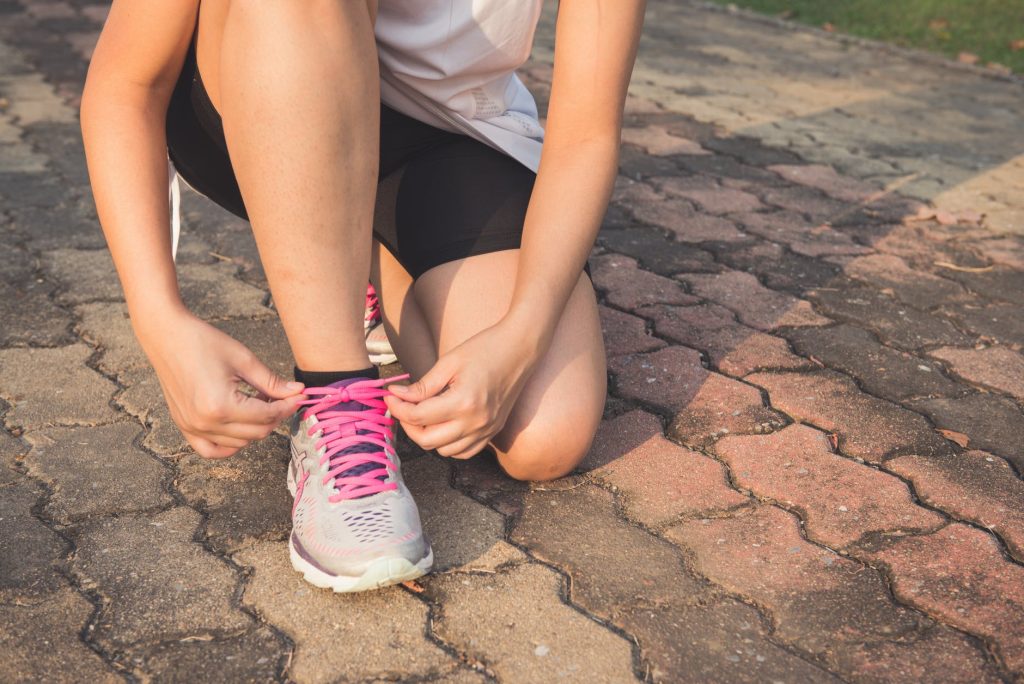Running is a great way to exercise, but it can lead to pain and serious injuries. Blisters are very common, along with shin pain and soft tissue injuries. You may even trip and fall.
To minimize the risk, heed the following tips on safe running:
Consider Going to a Gym
These days, it’s probably now okay for you to visit a gym. You can try out a gym with advanced cardio equipment such as Fitness 19, which also offers equipment for strength training.
Running indoors is generally safer, because you don’t have to deal with outdoor issues. Run in place on a treadmill, and that’s that. Just learn to use the machine properly and operate it at a safe speed, and you’re good.
Outdoors, you have other dangers to worry about that can cause injuries. Cars on the streets can hit you, and you might get run over by a biker on a running path. The terrain may not be all that smooth, and it’s easier to trip and fall. There may be dogs on the loose in your neighborhood. Heck, you might even get mugged.
You have weather conditions to consider as well, and rain or snow can present additional difficulties. it may also be too dark to run at night, unlike indoors where you always have good visibility. A gym may also have a trainer on hand to offer you tips on not to hurt yourself.
Try Strength Training
This is another advantage of going to a gym, as you’re likely to find weights there to help with strength training. Building muscle is a crucial part of your overall fitness, as it also helps with weight loss. In this case, it helps to prevent running injuries.
If you have weak muscles, then they’re more likely to break down and cause you to get hurt. Strength training builds up those muscles, and you also enjoy improved bone density and greater endurance as a result. All these benefits optimize your running as well. That’s why it’s ideal that you lift weights one day, and then run the next day.
Buy the Right Type of Shoes
That means buying shoes actually meant for running, and make sure you get them in the right size. You should have a bit of wiggle room in the toes, while your feet fit snug in the heel. You should get a proper fitting at a specialty store first, especially if you’re planning to buy your shoes online.
You need to make sure these shoes are high quality, made by a reputable brand. Take care of your running shoes, but understand that they’re not meant to last forever. You may have to replace the shoes once you’ve run in them for 400 to 600 miles. For regular runners, that’s about 6 months of running.
Keep Your Body Limber
You may want to add some flexibility exercises to your non-running workout days, to make sure to keep your body loose and limber. Yoga is a great way to achieve this, as it also improves your balance. It can even help you feel more mentally focused and emotionally calmer as well.
You ought to warm up before you run as well. Make sure you thoroughly stretch the muscles in your calves and thighs, using lots of slow and sustained stretches.
Ease Into It
Take it slow when you’re just starting (or restarting) running. Go with shorter runs and easier paces. You can always gradually increase the distance and the speed after each week so you can progress.
Just don’t increase both the distance and the speed at the same time. Increase the distance after a week, and then run that same distance at a slightly higher pace.
Hydrate
You will need to hydrate properly, before, during, and after the run. Make sure you always have your water bottle with you. Or you can plan your outdoor run to take advantage of drinking fountains along the way.
Rest is Also Important
You need to rest if you’re feeling tired. Once you think you’ve reached your limit, stop working out. You have to listen to your body, or else you might get hurt.
That also includes when you’re not feeling at your best before you run. If you’re feeling too tired, then you may want to consider simply skipping training for the day. The same goes if you have a medical condition, or an injury.
It’s also important that you have your rest days. At the very least, you need to rest from any sort of exercise one day a week. It’s actually more effective to run on alternate days, with strength training on non-running days.
Consult Your Doctor
This is always a good idea, because, after all, it’s all about your health. You can discuss your fitness goals, and which exercises and workouts may be best for you. This is especially important if you have some sort of medical condition or you’re taking medication. If you have any limitations, you ought to know.
Your doctor may even have some tips on how you can run safely to avoid injuries. Plenty of doctors also run, you know!

